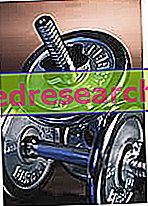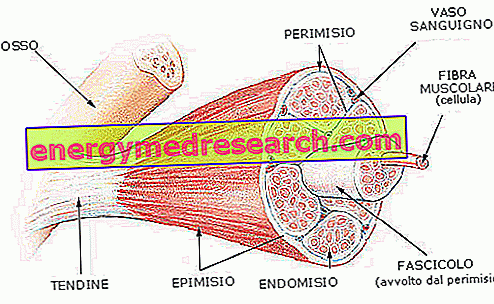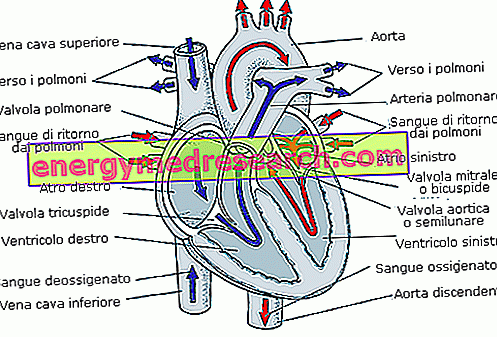Edited by: Roby Clifford
A very common mistake that is known in gym goers, and that 90% of instructors do not tend to correct, is the time to perform repetitions. We think a lot about revolutionary, short and intense methods and systems, but even this basic indication, often overlooked, should be indicated in the cards together with the traditional patterns of series and repetitions. Even before developing hypertrophy (mass increase), a slow and controlled execution is functional for the prevention of injuries. This also allows you to learn well the technique of the exercise that takes place, focusing on the muscle in question. In the "uncontrolled" execution it is easy to work other muscles instead of the target one.

The TUT, or time under tension, is given by the sum of the times of the positive and negative phases of the movement, together with those of the moment of maximum contraction and lengthening of the muscle. It is also necessary to make the most of the negative phase, where we can also support loads of 130% compared to the positive phase, and it is extremely important to recruit the largest number of fibers. There is a lot of scientific evidence on the importance of the eccentric phase of movement: this type of contraction creates numerous microlesions in the fibers, stimulating a strong supercompensation adaptation, with consequent muscular hypertrophy. Fast executions, typical of work of strength, do not give visible mass increases precisely because they exhaust less fibers, charging the CNS more. It is therefore clear that moving 100 kg for 8 repetitions in an explosive manner, taking advantage of the ballistic rebound, is less productive from a hypertrophic point of view than moving 85 kg for 8 repetitions with a time of maybe 2-0-2. In addition it has been shown that even for strength high-speed but low-speed workouts, especially in the negative phase, are more productive than high-speed ones.
Some say that to maximize hypertrophy, the execution time of a series must be between 40 and 70 seconds and those who maintain the importance of an interval that varies from 30 to 60 seconds. There are also those who speak of functional hypertrophy, which would develop between 20 and 40 seconds. I personally accept the advice of Charles Poliquin, who advises from 20 to 70 seconds. There are animal experiments that show greater and noticeable hypertrophy in those that performed the same movements but in a more controlled manner.
We understand how the TUT argument has a great importance in weight training and how serious it is not to face it. We omit, because it is not the subject of the article, the times for the force and resistance series. We add, for information, that 8-15 repetitions are given as target numbers for hypertrophy. Based on my experience, making a series between 20 and 30 seconds last is the best thing at the beginning, especially if the load capacity is not high. Eventually, if you want to load more, you can do 6 repetitions with a time of 5-0-1. Remember that our aim is to exhaust as many fibers as possible, the more we keep our muscles under tension and the greater the stimulus to its growth. Obviously, taking "joint" breaks during the performance only signals to the body that the series is over, so it does not need to grow: "fatigue is over, thank goodness!" he says.
Evidence of the validity of these theories I found on those guinea pigs that are often my students. I saw that while increasing the loads in the exercises the volume of their muscles remained the same, even with a correct diet. So many times I've heard people say, "but how is it that I raise twice that guy but he's twice my size?" Their answer was always: "surely you bomb!" "No, my dear, the truth is that he is able to withstand a normal weight under tension and concentrate for a very long time, maintaining a perfect technique". So I inserted in their cards in the first exercise, which is usually of isolation (crosses for the chest, leg extensions and leg curl for the legs, lateral risers for the shoulders etc.), series at 30, 20 and 15 repetitions. Result? Their loads on the multi-joint exercise remained the same or grew little but their muscles looked fuller and harder. I had the same results a short time later, inserting a timeframe of 2-0-2 multi-joint operations into the cards, ie two times (not really seconds) in the positive phase of the exercise and two in the negative phase, without pauses in the contraction phase. Max.
Another proof of this is Dorian Yates, the Englishman 5 times Mr. Olympia has always been used to training with only one series per exercise, at the maximum weight usable for a perfect controlled execution without rebounds or impulses. Let's get away from the mind then that the use of drugs creates huge gains in hypertrophy without proper training.
In contrast to this, the myth that a fast execution serves to define the muscle must be dispelled. You had to see how the students of 30 or 20 were doing. I believe this belief derives from the fact that in periods of restricted diet the body builders, to create hypertrophy, used reduced loads for a higher number of repetitions, quickly, given the normal drops in strength during periods of caloric reduction. In this way they maintained a high TUT and a power factor equal to or slightly less than the mass period.
Some might argue that weightlifters and powerlifters are big all the same doing only strength work. Well, go look at their training sheets, after working on strength in basic athletic gestures they always do a job on hypertrophy, with higher repetitions; moreover they frequently perform jobs with high repetitions with low percentages on the ceiling to train fast strength. In periods outside the races then they dedicate themselves in a particular way. There are those who also speak of total TUT, that is of the sum of the various TUT of the various series, which represents a very important parameter. Likely that here too there is a fund of truth in the subject. This is explained because in addition to a high TUT we also need a high volume to create hypertrophy. Of course everyone would like to move 150 kg of bench or 300 kg of press, but moving a few dozen less and more slowly, would help to increase the volume of legs and pectorals. So, if your goal is to increase lean mass to increase volume or lose weight, don't forget the work of strength, simply, in your annual preparation, dedicate a shorter space to it.
To avoid, especially for beginners and those who do not do organized strength work, forced repetitions. Trying to do an extra repetition with the help of an assistant, often forced to take on half of the load, serves absolutely nothing, except to exhaust your SNC by sending you overtraining; to get out of this condition it will therefore be necessary to recover for a long time, losing time in periods of discharge.
All the best coaches recommend bringing the series to the maximum incapacity positive or concentric exhaustion, and independently, maintaining correct form and time of execution, without those painful harrowing repetitions (junk reps).
Avoiding these useless tricks allows you to train more often as the various muscles require, creating more volume and not going overtraining. The smaller muscles have greater resilience, so they can repeat the job more often. Here, too, the empirical experience on my students has given me important confirmations. I managed to train some of them, even 5 times a week, in a restricted caloric regime, with a card divided into three parts, where the muscles were trained several times also for indirect training (eg reverse pull-ups = indirect work) on the biceps) and all this without creating overtraining. But I believe that a better organized work could give even more exciting results, given that most of the hypertrophy was obtained on the arms, small muscles that need more work (my arm grew by 1cm!).
Last but not least is the "anabolic window". After all these efforts, you have to feed your muscles quickly with something that allows them to grow. Muscles are made up of proteins, which in turn are made up of amino acids. An integration of both in the immediate post-training is therefore necessary. In order to be assimilated, these nutrients need an insulin stimulus and therefore a dose of slow-release carbohydrates such as maltodextrins and a teaspoon of honey with a slightly faster action, help restore glycogen stores without causing excessive secretion. insulin. After training, muscle cells are more willing to collect nutrients, but substances such as alpha lipoic acid, chromium picolinate, creatine, salt and glycerol can do much to store everything in the muscles and not under the skin. Also vitamin C, thanks to its antioxidant properties, greatly accelerates recovery. All this without spending billions on supplements of the latest generation that cost and serve no purpose without these bases.
So if you want more muscle there is no need to underestimate any of these factors, of course it is much more commercial to say and sell systems where you train every ten days or 2 weeks yes and one no, maybe 2 or 3 times a week. All of us, given the many commitments we have, we wish it were so. Unfortunately there is no choice. But it is certain that 45 minutes of training + 15 of showers are very few even 4/5 times a week. By organizing ourselves, since a productive training must last a maximum of one hour, we can achieve those results that we so desire.



